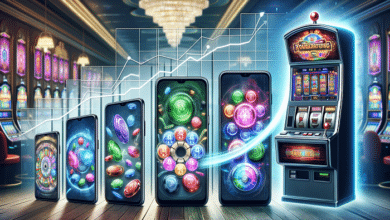How Game Design Influences Slot Payout Frequencies

Have you ever noticed how some slot games seem to reward you more often than others?
Or wondered why certain games give frequent small wins while others feel like they’re holding back for a big payout? These differences aren’t just random. It all comes down to game design and how developers structure payout frequencies.
Slot games may look simple on the surface, but behind the scenes, there’s a lot of creative thinking and smart planning that affects how often players win.
Let’s explore how that design process works and how it shapes your experience every time you hit the spin button.
Understanding Payout Frequency
Payout frequency, also known as hit frequency, refers to how often a slot game pays out a win. It doesn’t mean how much you win, just how frequently those winning combinations appear. Some slot gacor hari ini games are built to give you regular small wins to keep the excitement going, while others are designed to deliver occasional large prizes.
Game developers make these choices intentionally, depending on the overall feel they want the game to have. A fast-paced, energetic game might offer more frequent wins, while a more intense, high-risk game might hold out for fewer but bigger rewards.
The entire payout rhythm of a slot game is carefully programmed into the game’s software, giving players different types of experiences depending on the theme, gameplay goals, and jackpot possibilities.
The Role of Volatility in Design
One of the key design elements that affects payout frequency is volatility. Volatility is all about risk and reward. A low-volatility game will usually pay out smaller amounts but more frequently. These games feel light, fun, and fast. They’re perfect for players who enjoy seeing wins pop up regularly, even if they’re not huge.
High-volatility slots are different. These are built to keep you spinning for longer stretches without a win, but when a payout hits, it’s usually much bigger. These games often come with intense themes and dramatic bonus features, creating anticipation with every spin. Developers use volatility as a tool to balance gameplay with excitement.
Medium-volatility games offer something in between, blending steady wins with the chance for significant payouts. Game designers use this to appeal to a broader audience who want a bit of both.
Reel Layout and Payline Structure
Another important part of slot design is the layout of the reels and the paylines. A game with more reels or paylines offers more ways to win, which can naturally lead to more frequent payouts. However, the game still follows its logic for how often those combinations will hit.
Some games use fixed paylines, while others offer adjustable options that let players choose how many lines they want to activate. More active paylines often increase your chances of winning, although the size of your bet also factors into how much you win.
Developers choose different reel setups and payline options depending on the type of experience they’re creating. Some bet 200 perak games even use cluster mechanics or ways-to-win systems, where symbols just need to touch in groups or land in any position on adjacent reels. These modern designs often boost the payout frequency, especially in fast-moving games.
Bonus Features and Their Influence
Bonus rounds are a big part of slot game appeal, and they also impact how often you win. Free spins, expanding wilds, mystery symbols, and multipliers are all bonus features that can turn an average spin into something special.
The way these bonuses are structured also affects payout frequency. Games that trigger bonuses more often usually offer lower rewards in those features, while games with rarer bonuses may give higher payouts when they finally hit.
Random Number Generators and Fair Play
All modern slot games use random number generators to decide the outcome of each spin. These are computer programs that ensure every result is completely random and fair. But even within this system, developers can design the game to control how frequently wins occur by setting specific return-to-player values and distribution patterns.
Game designers don’t control the exact outcome of your next spin, but they do decide the overall structure of how the game will play out over time. This balance of randomness and design is what makes each slot unique while still staying fair.
Themes and Emotional Influence
Themes also play a subtle role in payout design. A game themed around magic, fantasy, or treasure hunting might be crafted to feel more mysterious or adventurous, which pairs well with less frequent but more impactful wins. On the other hand, cheerful or cartoon-style games might offer fast-paced, regular wins to keep the vibe light and fun.
The visual design, sound effects, and animations all work together with the payout structure to create a full experience. The goal is to match the emotional tone of the game with how it pays out, making the gameplay smooth and satisfying for every player.
Summary
Game design plays a major role in shaping how often a slot game pays out. From reel layout and paylines to volatility and bonus rounds, every detail is crafted to create a specific rhythm and feel. Whether you enjoy games that pay out frequently or ones that hold out for big wins, there’s a design out there that matches your preferences.




